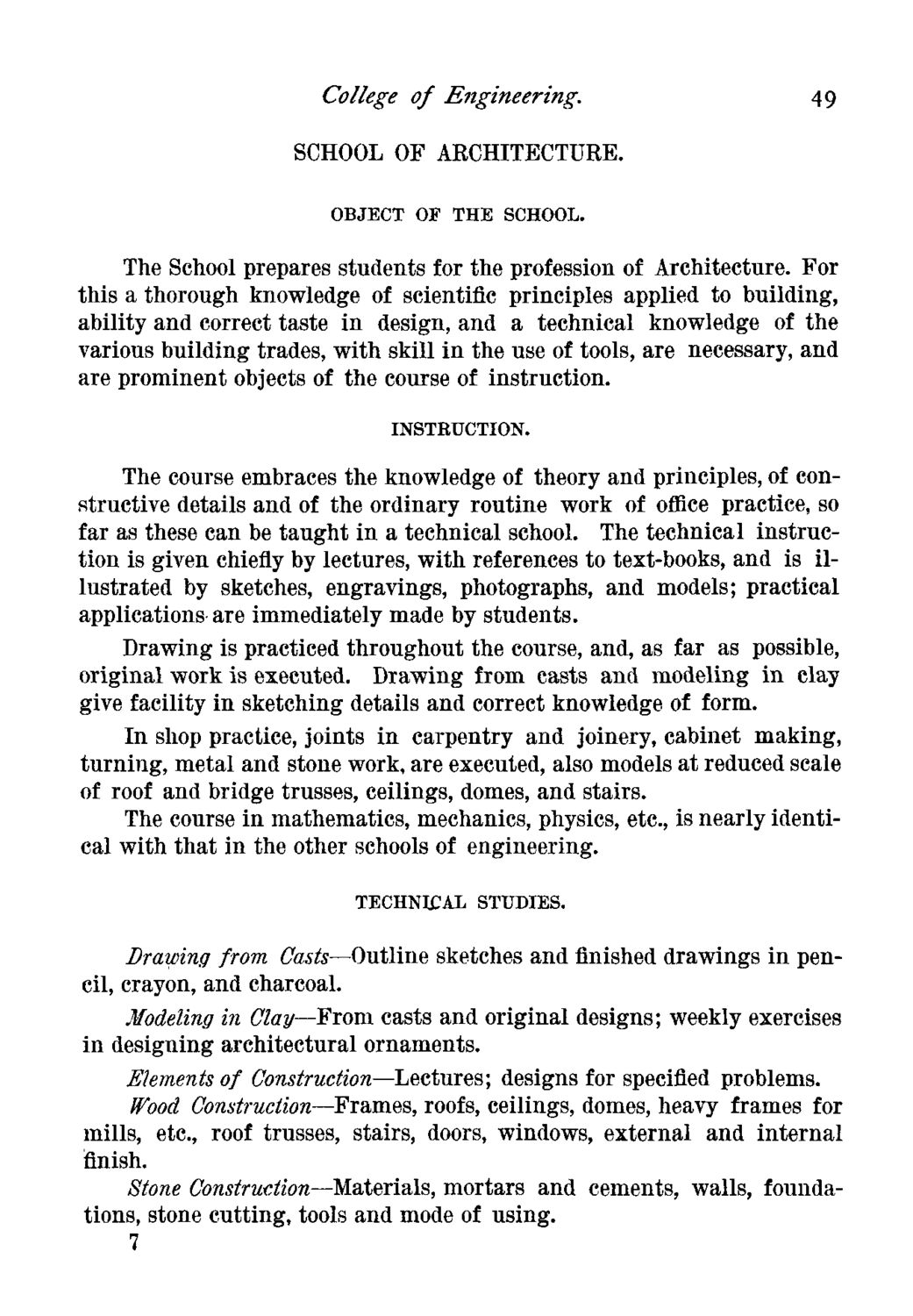| |
| |
Caption: Course Catalog - 1881-1882
This is a reduced-resolution page image for fast online browsing.

EXTRACTED TEXT FROM PAGE:
College of Engineering. SCHOOL OF ARCHITECTURE. OBJECT OF THE SCHOOL. 49 The School prepares students for the profession of Architecture. For this a thorough knowledge of scientific principles applied to building, ability and correct taste in design, and a technical knowledge of the various building trades, with skill in the use of tools, are necessary, and are prominent objects of the course of instruction. INSTBUCTION. The course embraces the knowledge of theory and principles, of constructive details and of the ordinary routine work of office practice, so far as these can be taught in a technical school. The technical instruction is given chiefly by lectures, with references to text-books, and is illustrated by sketches, engravings, photographs, and models; practical applications are immediately made by students. Drawing is practiced throughout the course, and, as far as possible, original work is executed. Drawing from casts and modeling in clay give facility in sketching details and correct knowledge of form. In shop practice, joints in carpentry and joinery, cabinet making, turning, metal and stone work, are executed, also models at reduced scale of roof and bridge trusses, ceilings, domes, and stairs. The course in mathematics, mechanics, physics, etc., is nearly identical with that in the other schools of engineering. TECHNICAL STUDIES. Drawing from Casts—Outline sketches and finished drawings in pencil, crayon, and charcoal. Modeling in Clay—From casts and original designs; weekly exercises in designing architectural ornaments. Elements of Construction—Lectures; designs for specified problems. Wood Construction—Frames, roofs, ceilings, domes, heavy frames for mills, etc., roof trusses, stairs, doors, windows, external and internal finish. Stone Construction—Materials, mortars and cements, walls, foundations, stone cutting, tools and mode of using. 7
| |